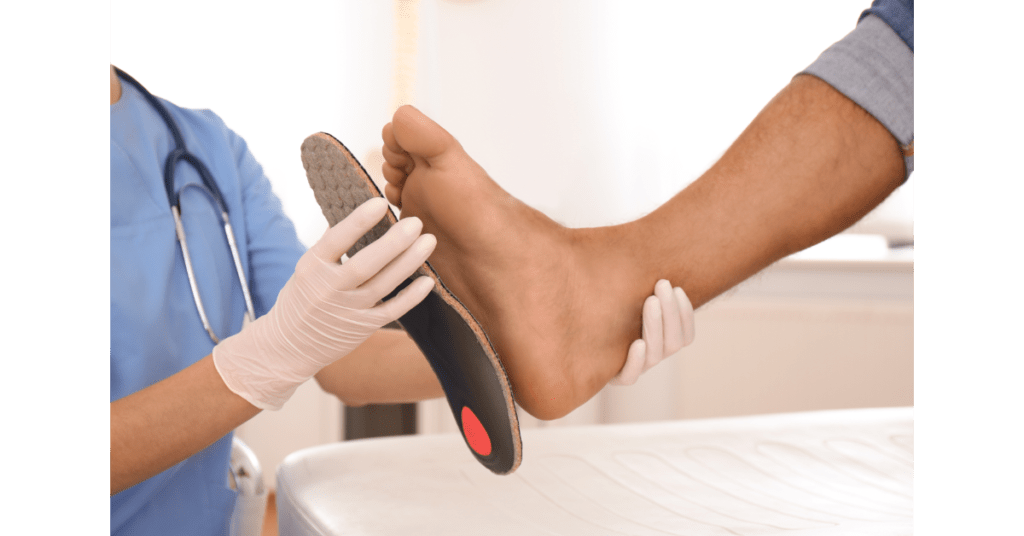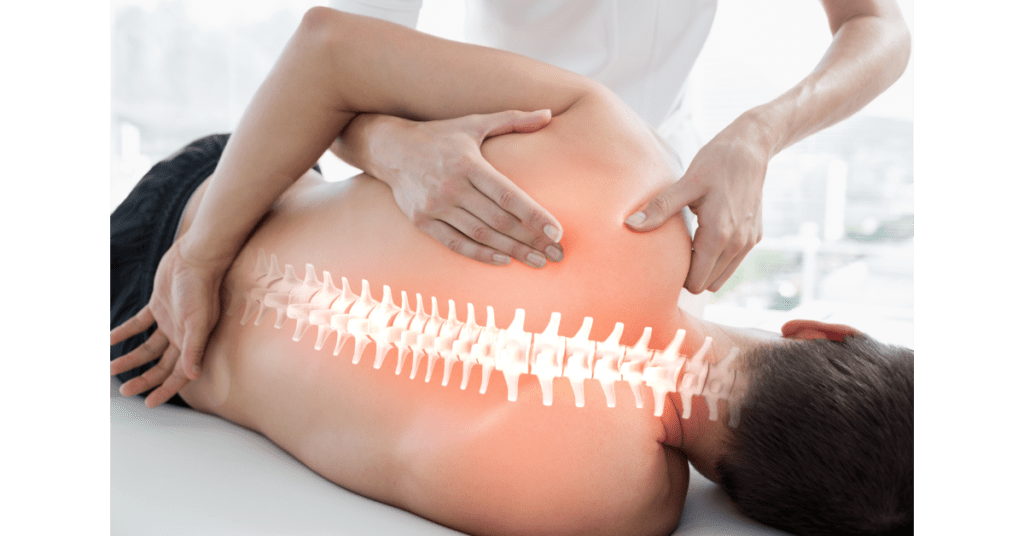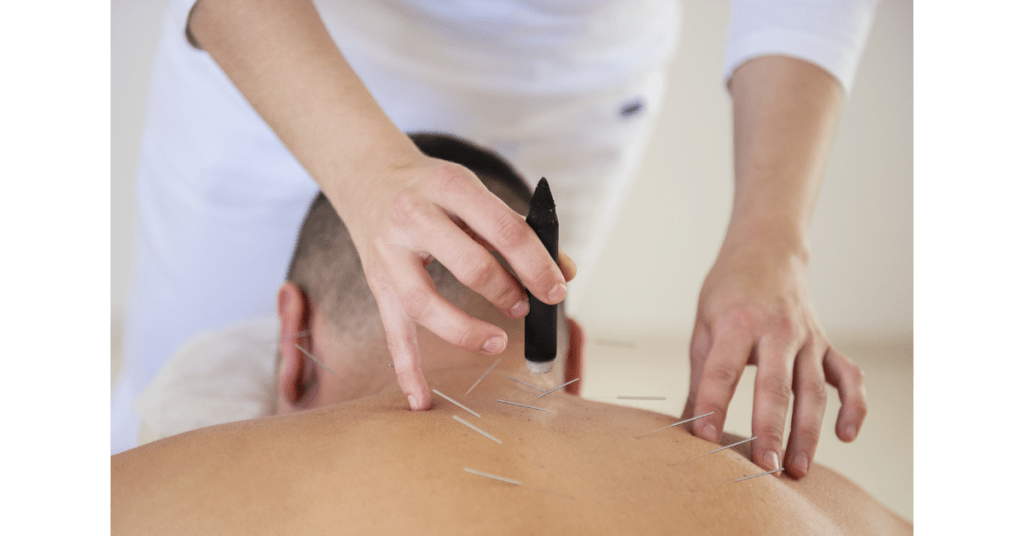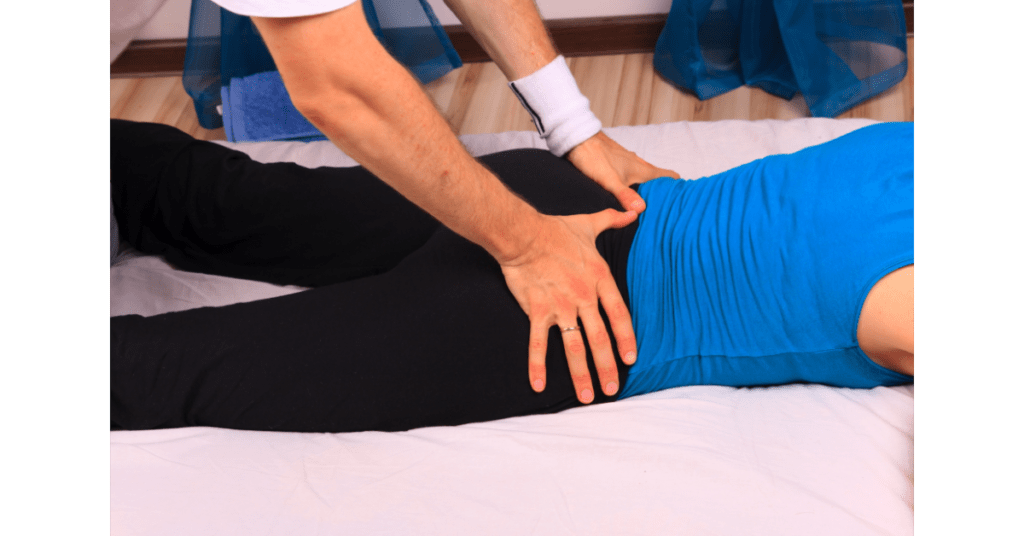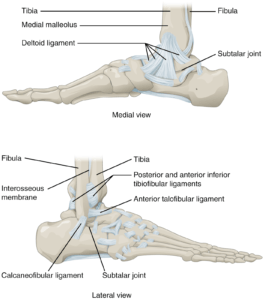
The ankle joint works like a hinge, but a lot more than a normal hinge joint. Essentially, the ankle comprises many essential structures. It’s the specific design of the ankle that makes the joint very stable. The joint must be robust to support up to 1.5 times your body weight when you walk and up to 8 times the body weight as you race.
The ankle comprises two joints: the subtalar joint and the ankle joint. The joint of the ankle comprises three parts, visible above from the knees, or from the knees: the tibia that forms the central or anterior part of the ankle; the fibula that forms the lateral or outer part of the ankle; and the talus below. The joint of the ankle is responsible for the up-and-down motion of the foot. Under the actual ankle joint is the second component of the foot, the subtalar joint, which comprises the top talus and the bottom calcaneus. The subtalar joint enables side-to-side rotation of the foot. The ends of the bones of these joints are bound by the joint cartilage. The main ligaments of the ankle are: the anterior tibiofibular ligament which attaches the tibia to the fibula; the lateral collateral ligaments which bind the fibula to the calcaneus and give the ankle lateral stability; and, on the medial side of the ankle, the deltoid ligaments which link the tibia to the talus and calcaneus and provide medial stability.
All the structures of the ankle along with the muscles and tendons of the lower leg work in unison to handle the tension that the ankle endures as someone climbs, runs or leaps.
The anatomy of the foot, as is clear from above, is very complicated. If all fits well, the foot works properly.
Common Ankle Sprains & Physiotherapy in Scarborough and Woodbridge
A sprain is a stretch injury to the ligaments that protect the ankle. The ligaments on the outside of the leg are the most often injured when the foot is twisted backward (inverted).
A “lateral” ankle sprain is a stretch fracture to the ligaments of the outer/lower portion of the ankle. This happens most often in an inversion fracture where the foot is bent inward.
A “high” ankle sprain also known as syndesmosis injury is a stretch injury to the ligament that binds the tibia and fibula together in the lower leg. It happens most often in an eversion fracture where the ankle is bent outward. The foot is soft and sore on the ground, behind, and right in front of the bone of the leg. Normally, the bone is not as tender in the region above and in front of it.
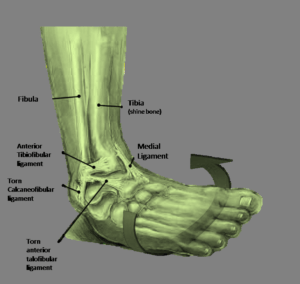
Treating Ankle Sprain in Scarborough & Woodbridge
RICE (rest, ice, compression, and elevation) is the primary therapy. Severe accidents will benefit from a walking boot to help protect the foot. The aim of recovery is to reduce pain and swelling and regain strength, range of motion, and balance. The healing time for lateral ankle sprains is typically one to three weeks. Recovery time for high ankle sprains is typically three to six weeks.
Rehabilitation will begin a few days after the injury, when the swelling goes down. There are three goals to be met in rehabilitation:
1. Restore mobility and versatility.
2. Restore your strength.
3. Restore the balance.
What Happens If You Leave a Sprained Ankle Untreated?
Although sprained ligaments are most usually repaired within 6 to 12 weeks, it is often a physical weakness that is significant in the long term for the sprained ankle. Stiff ankles that may not recover their full mobility have been found to not only inhibit your ability to go down the stairs or point your feet but can impede your ability to swim or dance. Ideally, stiff ankles would be loosened to regain full motion range.
Loose ankles will feel unstable and may make you susceptible to re-spinning and further ankle joint damage, which may increase your likelihood of degenerative arthritis. Wobbly ankles will usually be fortified to regulate the ankle dynamically. The poor ankles fell into the same bracket.
At the end of the day, there is rarely a basic ankle sprain that does not have a persistent functional effect. Professional recovery advice will not only correctly assess the ankle, but can immediately correct any defects when the ankle fracture is in the juvenile tissue healing process. Chronic ankle sprains are often more difficult to manage due to scar tissue inflammation, muscle fatigue, etc.
Low ankle sprains cause ligament damage to the stabilizing mechanisms protecting the two weight-bearing shin bones (tibia and fibula). High ankle sprain is a much more debilitating ankle condition that is often misdiagnosed as a common lower sprained ankle. Failure to treat unstable high ankle sprain can quickly destroy your weight-bearing ankle joint surfaces and result in ankle joint destruction.
Our Rehabilitation Services in Toronto and Vaughan
As is the known fact that a sprained ankle can increase the risk of re-injury by as much as 40-70 percent, but good post-injury recovery procedures reduce your risk.
We focus on these key recovery goals that need to be met to rehabilitate a sprained ankle to successfully avoid recurrence.
Our Treatment Aims:
- Injury Protection, Pain Relief & Control Inflammation
- Regain Full Range of Motion
- Strengthen your Ankle and Calf Muscles
- Restore Joint Proprioception & Balance
- Restore Normal Function
- Speed & Agility
- Sport-Specific Skills
- Graduated Return to Training
- Return to Competition
We review the goals, timeframes, and workout plans with you in order to maximize the full and healthy return to sport. The ideal result would allow you to work at maximum strength, control, agility, and function, with the added confidence that a rigorous recovery plan has reduced the risk of potential injury.
We use advanced modalities such as Tecar also known as Radio Frequency, shockwave and laser to get you better quicker. Watch the video below and although results for every case is not always the same we consistently get fast recovery.
Are you looking for physiotherapy or a Chiropractor? If Yes, then visit Simply Align Rehab Physio in Scarborough/Toronto or Woodbridge/Vaughan or you can always call or text us for your Physiotherapy or Chiropractor needs in Toronto at (416) 438-3230 or For Physiotherapy or Chiropractor need in Vaughan (Woodbridge) at (905) 638-9840.
Also Read
| Knee Ligament Injuries (ACL, PCL, MCL, LCL) | Repetitive Strain Injuries |
| Shin Splints | Sprains (General) |

